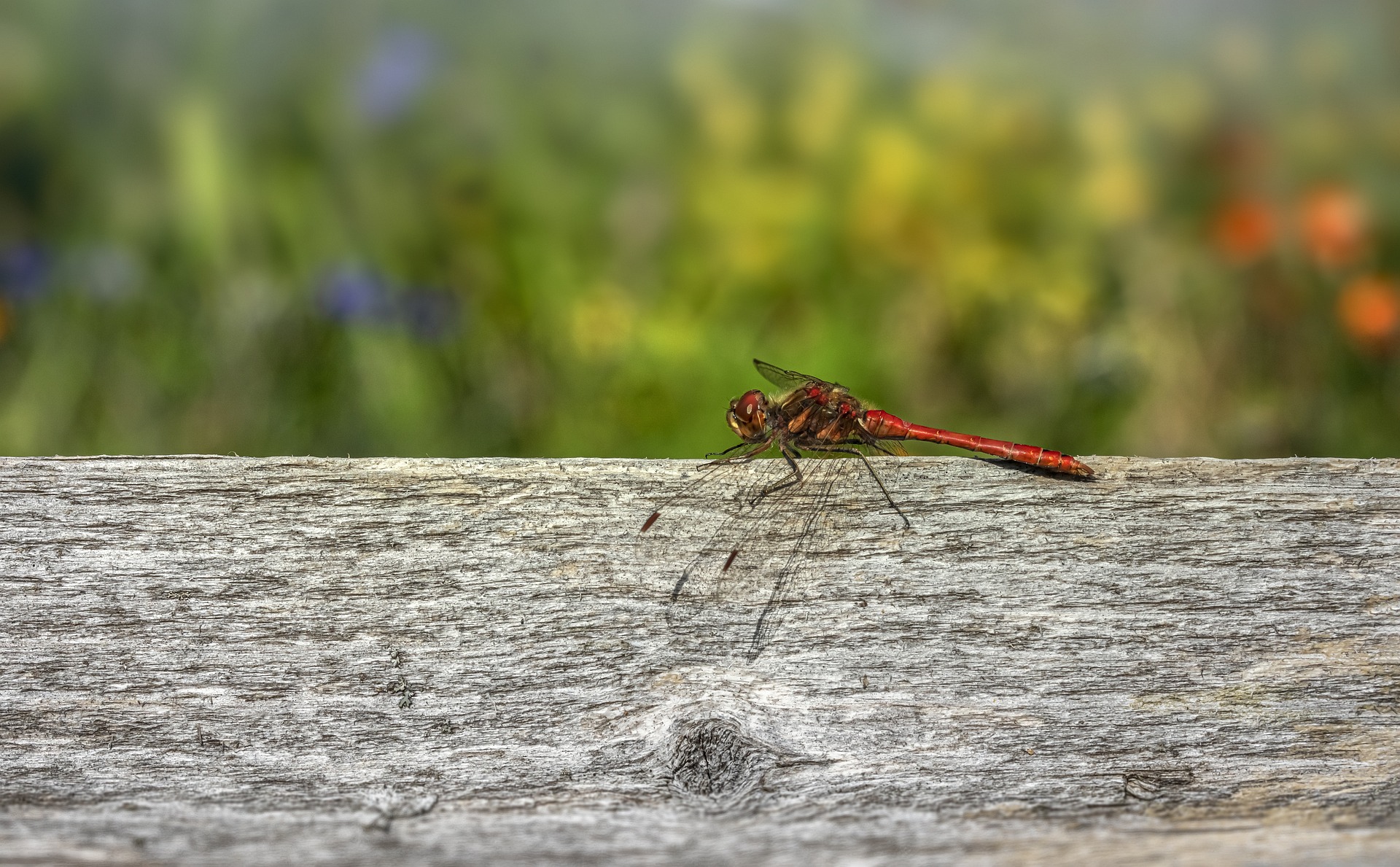The Red Darter commonly refers to the Common Darter (Sympetrum striolatum), a species of dragonfly found across Europe, North Africa, and parts of Asia. These dragonflies are known for their striking coloration and agile flight. Here’s an overview of their characteristics and behavior:
Appearance:
- Size: Common Darters are medium-sized dragonflies, with a body length of about 3.4 to 4.5 centimeters (1.3 to 1.8 inches).
- Coloration: Males are characterized by their bright red or orange-red bodies, while females and immature individuals are generally yellowish-brown. Both sexes have a distinctive black line along the side of the abdomen.
- Wings: Their wings are clear with a slight amber tint near the base, and they have a brown patch (pterostigma) on each wing.
Habitat:
- Preferred Habitats: Common Darters are versatile and can be found in a wide range of habitats, including ponds, lakes, slow-moving rivers, and marshes. They prefer sunny spots near water bodies.
- Geographic Range: They are widespread throughout Europe and parts of Asia, and their range extends into North Africa.
Behavior:
- Flight: These dragonflies are strong fliers and can often be seen darting rapidly around water bodies, hence their name. They are also capable of hovering and making quick, agile turns.
- Feeding: Common Darters are carnivorous and feed on small flying insects, which they catch in flight. Their diet includes mosquitoes, flies, and other small insects.
- Territoriality: Males are territorial and often patrol a specific area of water, defending it from other males and attracting females for mating.
Life Cycle:
- Mating: Mating occurs in flight, and pairs can often be seen flying in tandem. The male grasps the female behind the head with claspers at the end of his abdomen.
- Egg-Laying: Females lay eggs by dipping their abdomen into the water while in flight, a process known as oviposition. The eggs are usually laid in aquatic vegetation or in mud near water.
- Larvae: The larvae (nymphs) are aquatic and undergo several molts as they grow. They are voracious predators, feeding on small aquatic organisms.
- Emergence: After completing their development, the nymphs climb out of the water onto vegetation, where they undergo their final molt to emerge as adult dragonflies.
Ecological Role:
- Predation: Common Darters play a crucial role in controlling populations of small flying insects, including pests such as mosquitoes.
- Indicator Species: Their presence can indicate healthy aquatic ecosystems, as they require clean water for their larvae to develop successfully.
Conservation Status:
- Population: The Common Darter is not currently considered endangered and is listed as Least Concern by the IUCN. They are widespread and common in suitable habitats.
- Threats: Potential threats include habitat loss, water pollution, and climate change, which can impact their breeding sites and larval development.
Interesting Facts:
- Thermoregulation: Common Darters often bask in the sun to raise their body temperature, which helps them become more active and efficient hunters.
- Adaptability: They are highly adaptable and can thrive in a variety of aquatic habitats, including man-made water bodies such as garden ponds.
- Seasonal Activity: They are typically active from late spring to early autumn, with peak activity in the summer months.
In summary, the Common Darter (Sympetrum striolatum) is a vibrant and agile dragonfly species known for its red coloration in males and wide range of habitats. As effective predators of small insects, they play an important role in their ecosystems and serve as indicators of environmental health. Their adaptability and widespread distribution make them a common sight near water bodies throughout their range.
Visited 194 times, 30 visit(s) today
Views: 311
Subscribe to the newsletter:
